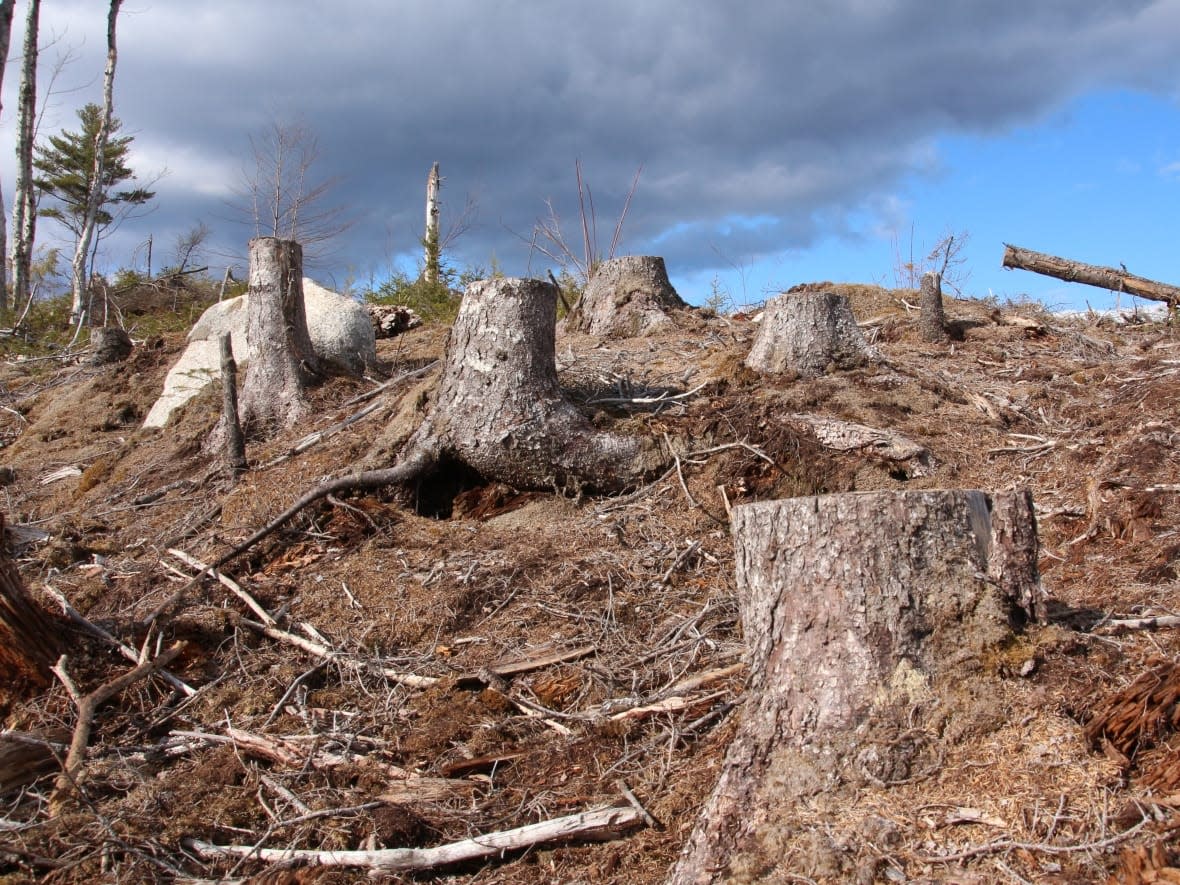Province releases Crown land locations where clear cutting may soon be permitted

The province has revealed the initial locations where clear cutting may be allowed on Crown land.
Maps released today include areas dotted throughout Guysborough, Antigonish, Colchester, Pictou, Lunenburg, Queens, Annapolis and Kings counties, but other locations will be identified in the future.
These initial parcels of Crown land where the province may permit clear cutting total 9,395 hectares. Over time, the government aims to turn 10 per cent of Crown land — or 185,000 hectares — into what it calls high-production forestry.
The pieces of land that were prioritized for clear cutting include those with existing planted forests as well as abandoned agricultural fields. Land that's within 100 metres of conservation zones, locations where species at risk are known to exist, critical wildlife habitat areas and rare or sensitive ecosystems were excluded.
Before harvesting and future planting can be carried out, the identified parcels must be assessed by licensed harvesters to ensure they are suitable for high-production forestry. Licensees must then submit a proposal to the Department of Natural Resources, and the public will be given an opportunity to provide input.
Herbicides to be permitted
Once an application has been approved, harvesters will cut down existing trees, then prepare the site for replanting with spruce seedlings, aiming to harvest those in 30 to 50 years.
Although herbicides have not been used as a forest management tool on Crown land in Nova Scotia since 2010, they will be permitted in high-production forest zones. The guidance released by the province Tuesday says herbicides are typically applied only once after seedlings are planted, though on some sites, they may be used to prepare a site prior to planting in order to eliminate weeds and grasses.
The government will not provide any funding for herbicide use, but it will explore how it can support research into new practices that reduce or eliminate use of herbicides.
Raymond Plourde, wilderness co-ordinator with the Ecology Action Centre, said he would rather not see any herbicides applied to Crown lands, and any research that helps reduce spraying of herbicides is a good thing.
Plourde said he's glad to see the province commit to a 10 per cent cap on clear cutting on Crown land, and that the selection criteria for the parcels seem well conceived.
He hopes the province will now turn its attention to selecting areas of Crown land that will receive protection and help achieve the goal of 20 per cent protected land and water by 2030. Currently, about 13 per cent of Nova Scotia's land and water is protected.
Industry reacts
In a news release, the province notes that using high-production forestry methods will allow crops of trees to mature in 25 to 40 years, compared with 60 to 90 years using traditional practices.
The 9,395 hectares of land announced Tuesday represent 0.5 per cent of Crown land. The Department of Natural Resources estimates that each year for the next 35 years, about 5,000 hectares will be added until the goal of 10 per cent is reached.
Stephen Moore, the executive director of Forest Nova Scotia, which represents companies operating in the lumber and forestry sector, said that timeline is a concern.
"Seeing that it's going to take more than three decades to get to the full level of high-production forestry is a bit of a disappointment, but we do believe we have room to work with the government to try to speed that timeline up."

Moore said the sector is already struggling with economic pressures including inflation and fuel costs, and the number of both buyers and contractors is down.
"We don't want to see the workforce decline.… Forestry is a largely rural industry and many rural economies are struggling … so anything that exacerbates those challenges or makes those problems worse is a concern."
Guidelines stem from Lahey report
The new guidelines stem from a report issued in 2018 examining forest practices in the province and laying out recommendations for the future. The report, authored by University of King's College president William Lahey, recommended a "triad model" of ecological forestry.
That model includes three types of zones: conservation zones where biodiversity is protected; ecological matrix or mixed-use zones, where biodiversity is prioritized but some timber can be harvested using lower-intensity practices; and high-production zones, where the focus is on growing timber products quickly and efficiently to support the forestry sector.
Conservation zones currently comprise about 630,000 hectares, or 35 per cent of Crown land, and that figure is expected to grow as more land is protected. Mixed-use zone now stands at about a million hectares, or 55 per cent of Crown land, but that amount could fall as conservation zones grow.
MORE TOP STORIES


